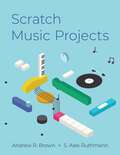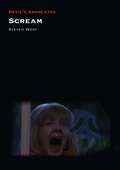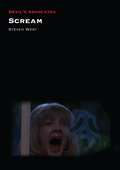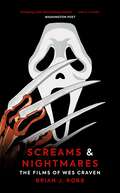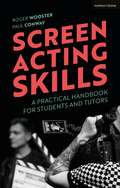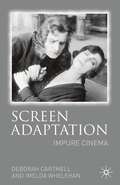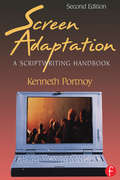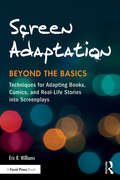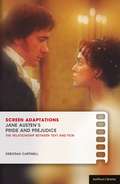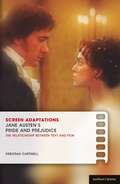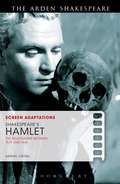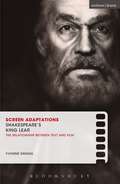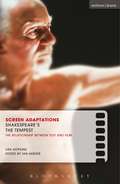- Table View
- List View
Scrapers: A Visual Guide to Extraordinary Buildings
by Zack ScottWith this exquisite illustrative masterpiece, Zack Scott explores in stunning detail the majestic constructions that humans have created on the surface of our own planet. This is SCRAPERS, a visual history of man's endeavours to reach higher and higher, through the construction of mind-blowing new buildings.Zack Scott takes us on an illustrative journey from humankind's first attempts to touch the sky with their creations, to the modern masterpieces of architecture and engineering standing proudly across the globe. From Stonehenge to the Burj Khalifa; the Taj Mahal to the Shard, Zack shares the little-known facts and fascinating human stories behind the most incredible buildings in the world. In gorgeous graphic style, SCRAPERS opens our eyes - and our minds - to these true marvels of human architecture.
Scratch Music Projects
by Andrew R. Brown s. Alex RuthmannIn this practical, project-based book, music students, educators, and coders receive the necessary tools to engage with real-world experiences in computation and creativity using the programming language Scratch. Designed to teach students the fundamental concepts of computational thinking through interactive music, sound, and media, projects vary in complexity and encourage readers to make music through playing and creating music. This book introduces readers to concepts in computational thinking and coding alongside parallel concepts in music, creative sound, and interaction. The book begins with a gentle introduction to the Scratch 3.0 programming environment through hands-on projects using a computer keyboard and mouse to make music and control sounds, creating original sounds, and performing them as an instrument. The next chapters introduce programming musical sequences, melodies, and structures, and assembling them into a virtual band that can be performed live or automated through algorithms. The final chapters explore computational thinking and music in the contexts of making games with sound effects, teaching the computer to generate music using algorithms and rules, interacting with music using live video, finishing with a chapter on musical live coding, where readers will create and manipulate computer code to perform, improvise, and create original music live.
Scratch Music Projects
by Andrew R. Brown s. Alex RuthmannIn this practical, project-based book, music students, educators, and coders receive the necessary tools to engage with real-world experiences in computation and creativity using the programming language Scratch. Designed to teach students the fundamental concepts of computational thinking through interactive music, sound, and media, projects vary in complexity and encourage readers to make music through playing and creating music. This book introduces readers to concepts in computational thinking and coding alongside parallel concepts in music, creative sound, and interaction. The book begins with a gentle introduction to the Scratch 3.0 programming environment through hands-on projects using a computer keyboard and mouse to make music and control sounds, creating original sounds, and performing them as an instrument. The next chapters introduce programming musical sequences, melodies, and structures, and assembling them into a virtual band that can be performed live or automated through algorithms. The final chapters explore computational thinking and music in the contexts of making games with sound effects, teaching the computer to generate music using algorithms and rules, interacting with music using live video, finishing with a chapter on musical live coding, where readers will create and manipulate computer code to perform, improvise, and create original music live.
Scream (Devil's Advocates)
by Steven WestWes Craven's Scream (1996) emerged at the point where the early eighties American slasher cycle had effectively morphed into the post-Fatal Attraction trend for Hollywood thrillers that incorporated key slasher movie tropes. Scream emerged as a spiritual successor to Wes Craven's unpopular but critically praised previous film New Nightmare (1994), which evolved from his frustration at having lost creative control over his most popular creation, Freddy Krueger, and rebirthed the character in a postmodern context. Scream appropriates many of the concepts, conceits, and in-jokes inherent in New Nightmare, albeit in a much more commercial context that did not alienate teenage audiences who were not around to see the movies that were being referenced. This Devil's Advocate offers a full exploration of Scream, including its structure, its many reference points (such as the prominent use of Halloween as a kind of sacred text), its marketing ("the new thriller from Wes Craven" – not a horror film), and legacy for horror cinema in the new millennium.
Scream (Devil's Advocates)
by Steven WestWes Craven's Scream (1996) emerged at the point where the early eighties American slasher cycle had effectively morphed into the post-Fatal Attraction trend for Hollywood thrillers that incorporated key slasher movie tropes. Scream emerged as a spiritual successor to Wes Craven's unpopular but critically praised previous film New Nightmare (1994), which evolved from his frustration at having lost creative control over his most popular creation, Freddy Krueger, and rebirthed the character in a postmodern context. Scream appropriates many of the concepts, conceits, and in-jokes inherent in New Nightmare, albeit in a much more commercial context that did not alienate teenage audiences who were not around to see the movies that were being referenced. This Devil's Advocate offers a full exploration of Scream, including its structure, its many reference points (such as the prominent use of Halloween as a kind of sacred text), its marketing ("the new thriller from Wes Craven" – not a horror film), and legacy for horror cinema in the new millennium.
The Scream by Edvard Munch (large print)
by RnibThis is an image based on ‘The Scream ‘ created as both paintings and pastels and a black and white woodcut, by the Norwegian Expressionist artist Edvard Munch between 1893 and 1910. We have recreated the image, based on the black and white woodcut, and have coloured it for the Large Print version. There is a locator dot shown, which will be at the top left of the page when the image is the correct way up. Expressionist artists were not interested in portraying physical reality, but instead tried to express emotions and psychological states through distortion, exaggeration and the dramatic use of colour. The picture shows a figure in the foreground standing on a bridge holding its head, hands over its ears, mouth and eyes wide open as though screaming. In the background are two figures, an area of water and a raging red sky. It is impossible to tell the sex of the figure. It is shown from the thighs up, facing you with its head just below the centre of the image. Behind the figure is the handrail of the bridge. It goes from the bottom right corner of the image to the centre left edge where you will find the silhouettes of the two other figures. They seem to be looking to the right, at two boats on the water in the centre of the image. In the tactile version of the image, we have put a clear area around all of the figures to make them easier to find. The top third of the image is filled with the swirling red clouds that seem to race horizontally across the page. All of the lines in the image are rough and expressive. The orange red of the sky and the contrasting dark, muted colours in the rest of the picture give an air of fear and tension.
The Scream by Edvard Munch (UEB contracted)
by RnibThis is an image based on ‘The Scream ‘ created as both paintings and pastels and a black and white woodcut, by the Norwegian Expressionist artist Edvard Munch between 1893 and 1910. We have recreated the image, based on the black and white woodcut, and have coloured it for the Large Print version. There is a locator dot shown, which will be at the top left of the page when the image is the correct way up. Expressionist artists were not interested in portraying physical reality, but instead tried to express emotions and psychological states through distortion, exaggeration and the dramatic use of colour. The picture shows a figure in the foreground standing on a bridge holding its head, hands over its ears, mouth and eyes wide open as though screaming. In the background are two figures, an area of water and a raging red sky. It is impossible to tell the sex of the figure. It is shown from the thighs up, facing you with its head just below the centre of the image. Behind the figure is the handrail of the bridge. It goes from the bottom right corner of the image to the centre left edge where you will find the silhouettes of the two other figures. They seem to be looking to the right, at two boats on the water in the centre of the image. In the tactile version of the image, we have put a clear area around all of the figures to make them easier to find. The top third of the image is filled with the swirling red clouds that seem to race horizontally across the page. All of the lines in the image are rough and expressive. The orange red of the sky and the contrasting dark, muted colours in the rest of the picture give an air of fear and tension.
The Scream by Edvard Munch (UEB contracted)
by RnibThis is an image based on ‘The Scream ‘ created as both paintings and pastels and a black and white woodcut, by the Norwegian Expressionist artist Edvard Munch between 1893 and 1910. We have recreated the image, based on the black and white woodcut, and have coloured it for the Large Print version. There is a locator dot shown, which will be at the top left of the page when the image is the correct way up. Expressionist artists were not interested in portraying physical reality, but instead tried to express emotions and psychological states through distortion, exaggeration and the dramatic use of colour. The picture shows a figure in the foreground standing on a bridge holding its head, hands over its ears, mouth and eyes wide open as though screaming. In the background are two figures, an area of water and a raging red sky. It is impossible to tell the sex of the figure. It is shown from the thighs up, facing you with its head just below the centre of the image. Behind the figure is the handrail of the bridge. It goes from the bottom right corner of the image to the centre left edge where you will find the silhouettes of the two other figures. They seem to be looking to the right, at two boats on the water in the centre of the image. In the tactile version of the image, we have put a clear area around all of the figures to make them easier to find. The top third of the image is filled with the swirling red clouds that seem to race horizontally across the page. All of the lines in the image are rough and expressive. The orange red of the sky and the contrasting dark, muted colours in the rest of the picture give an air of fear and tension.
Screams & Nightmares: The Films of Wes Craven
by Brian J RobbIn a remarkable career that spanned more than forty years, writer, producer, and director Wes Craven successfully tapped into the horror vein to create scary, funny, cutting-edge thrillers that have become classics in the genre. His films have been both critical and commercial successes, most notably A Nightmare on Elm Street, which spawned a series of sequels and made Craven (and his creation, Freddy Krueger) an international sensation. He then created a second indelible horror movie series with Scream. In Screams & Nightmares, Brian J. Robb examines Craven’s entire career, from his low-budget beginnings to his most recent box office hits, from the banned thriller The Last House on the Left and the cult classic The Hills Have Eyes to the outrageous Shocker and The People Under the Stairs . Through exclusive interviews with Craven, Robb provides in-depth accounts of the making of each of the films – including the final instalments of the Scream series – Craven’s foray into writing novels, and his numerous television projects, charting the rich tapestry of his life and career until his death in 2015.
Screen Acting Skills: A Practical Handbook for Students and Tutors
by Roger Wooster Paul ConwayWhether you are a young actor seeking to land your first screen role or a workshop leader looking for relevant exercises that won't involve vast technical support, this book belongs on your shelf. Many screen actors begin their careers lacking the appropriate pre-shoot preparation and knowledge of studio protocols. This book helps actors new to screen performance to be fully prepared artistically - and technically. Screen Acting Skills augments existing theoretical and academic studies by offering practical, focused exercises that can be explored in low-tech workshop situations. Written in an accessible, jargon-free and often humorous style, Screen Acting Skills enables creativity on the workshop floor, allowing young - and older! - actors to access their own talent, and to hone their skills. This book offers students and tutors a straightforward approach to acting for the screen and how to prepare for studio work. The book is published alongside online videos of workshops with screen acting students.
Screen Acting Skills: A Practical Handbook for Students and Tutors
by Roger Wooster Paul ConwayWhether you are a young actor seeking to land your first screen role or a workshop leader looking for relevant exercises that won't involve vast technical support, this book belongs on your shelf. Many screen actors begin their careers lacking the appropriate pre-shoot preparation and knowledge of studio protocols. This book helps actors new to screen performance to be fully prepared artistically - and technically. Screen Acting Skills augments existing theoretical and academic studies by offering practical, focused exercises that can be explored in low-tech workshop situations. Written in an accessible, jargon-free and often humorous style, Screen Acting Skills enables creativity on the workshop floor, allowing young - and older! - actors to access their own talent, and to hone their skills. This book offers students and tutors a straightforward approach to acting for the screen and how to prepare for studio work. The book is published alongside online videos of workshops with screen acting students.
Screen Adaptation: Impure Cinema
by Hester Bradley Imelda WhelehanAdaptation studies has historically been neglected in both the English and Film Studies curricula. Reflecting on this, Screen Adaptation celebrates its emergence in the late 20th and 21st centuries and explores the varieties of methodologies and debates within the field. Drawing on approaches from genre studies to transtexuality to cultural materialism, the book examines adaptations of both popular and canonical writers, including William Shakespeare, Jane Austen and J.K.Rowling.Original and provocative, this book will spark new thinking and research in the field of adaptation studies. Mapping the way in which this exciting field has emerged and shifted over the last two decades, the book is also essential reading for students of English Literature and Film.
Screen Adaptation: A Scriptwriting Handbook
by Kenneth PortnoyScreen Adaptation : A Scriptwriting Handbook, 2nd ed. examines the challenge screenwriters face when adapting novels, plays, and short stories for the screen. Thoroughly updated to include new exercises and example from current films, this book provides practical, usable information on how to find the best plot line for a script, choose key characters, and understand the goals and formats of different genres. Topics include: determining which characters and events are most valuable on developing the main story;expanding short novellas and condensing long novels;using dialog to advance the story and reveal character;comparing the formats of plays, short stories, and novels to those of screenplaysapproaching the marketplaceIn this book, both beginning writers and professionals will find the tools necessary to evaluate a prospective source and create a successful screenplay
Screen Adaptation: A Scriptwriting Handbook
by Kenneth PortnoyScreen Adaptation : A Scriptwriting Handbook, 2nd ed. examines the challenge screenwriters face when adapting novels, plays, and short stories for the screen. Thoroughly updated to include new exercises and example from current films, this book provides practical, usable information on how to find the best plot line for a script, choose key characters, and understand the goals and formats of different genres. Topics include: determining which characters and events are most valuable on developing the main story;expanding short novellas and condensing long novels;using dialog to advance the story and reveal character;comparing the formats of plays, short stories, and novels to those of screenplaysapproaching the marketplaceIn this book, both beginning writers and professionals will find the tools necessary to evaluate a prospective source and create a successful screenplay
Screen Adaptation: Impure Cinema
by Imelda Whelehan Hester BradleyAdaptation studies has historically been neglected in both the English and Film Studies curricula. Reflecting on this, Screen Adaptation celebrates its emergence in the late 20th and 21st centuries and explores the varieties of methodologies and debates within the field. Drawing on approaches from genre studies to transtexuality to cultural materialism, the book examines adaptations of both popular and canonical writers, including William Shakespeare, Jane Austen and J.K.Rowling.Original and provocative, this book will spark new thinking and research in the field of adaptation studies. Mapping the way in which this exciting field has emerged and shifted over the last two decades, the book is also essential reading for students of English Literature and Film.
Screen Adaptation: Techniques for Adapting Books, Comics and Real-Life Stories into Screenplays
by Eric R. WilliamsOnce you understand the basics of screenwriting, ideas for your next screenplay are everywhere. Whether it comes from a favorite children’s book, a summer novel you discover accidentally, a news story that catches your imagination, or a chapter from your own life — advanced screenwriting strategies should now guide you through your first adaptation. In Screen Adaptation: Beyond the Basics, award-winning screenwriter Eric Williams uses examples from award-winning screenplays to explain new storytelling techniques. His real-world examples illustrate a range of advanced approaches — including new ways to identify and craft tension, how to reimagine structure and character, and how to strengthen emotional depth in your characters and in the audience. Screen Adaptation: Beyond the Basics teaches readers new ways to engage with source material in order to make successful adaptation decisions, regardless of the source material. The book offers: Three detailed examples of award-winning adaptations by the author, including the complete short story and final scripts used in the Voices From the Heartland project; Breakout boxes highlighting modern and historical adaptations and providing examples for each concept discussed in the book; More than fifty charts providing easy-to-use visual representations of complex concepts; New screenwriting techniques developed by the author, including the Triangle of Knowledge, the Storyteller’s Parallax, and the idea of Super Genres as part of a Screenwriters Taxonomy.
Screen Adaptation: Techniques for Adapting Books, Comics and Real-Life Stories into Screenplays
by Eric R. WilliamsOnce you understand the basics of screenwriting, ideas for your next screenplay are everywhere. Whether it comes from a favorite children’s book, a summer novel you discover accidentally, a news story that catches your imagination, or a chapter from your own life — advanced screenwriting strategies should now guide you through your first adaptation. In Screen Adaptation: Beyond the Basics, award-winning screenwriter Eric Williams uses examples from award-winning screenplays to explain new storytelling techniques. His real-world examples illustrate a range of advanced approaches — including new ways to identify and craft tension, how to reimagine structure and character, and how to strengthen emotional depth in your characters and in the audience. Screen Adaptation: Beyond the Basics teaches readers new ways to engage with source material in order to make successful adaptation decisions, regardless of the source material. The book offers: Three detailed examples of award-winning adaptations by the author, including the complete short story and final scripts used in the Voices From the Heartland project; Breakout boxes highlighting modern and historical adaptations and providing examples for each concept discussed in the book; More than fifty charts providing easy-to-use visual representations of complex concepts; New screenwriting techniques developed by the author, including the Triangle of Knowledge, the Storyteller’s Parallax, and the idea of Super Genres as part of a Screenwriters Taxonomy.
Screen Adaptations: A close study of the relationship between text and film (Screen Adaptations)
by Deborah CartmellThe study of literature on screen is a growing area of study in schools and universities. Many students have to produce critical essays comparing the novel and film versions of a particular text. The Screen Adaptations series offers a wealth of study material: from the literary context of the original work, through to thought-provoking comparisons of the screen versions, critical commentary and the afterlife of the films.Pride and Prejudice is a classic piece of literature and any new adaptation is a major event. With several well-known TV and film versions available (featuring stars such as Keira Knightley) as well as a Bollywood version, discussions around how these films interpret the story, themes and characters is a popular classroom choice for students and teachers alike. This new title in the Screen Adaptations series, provides a rich source of material to help students understand and write about the reciprocal relationship between film and literature. It offers in-depth analysis of the various screen versions and alternative `readings' as well as critical insight and an interview with writer Andrew Davies, best known for his 1995 BBC adaptation. Following from Shakespeare, Jane Austen on screen is now an established part of literary studies and the volume will conclude with a survey of the growing body of literature in the field.
Screen Adaptations: A close study of the relationship between text and film (Screen Adaptations)
by Deborah CartmellThe study of literature on screen is a growing area of study in schools and universities. Many students have to produce critical essays comparing the novel and film versions of a particular text. The Screen Adaptations series offers a wealth of study material: from the literary context of the original work, through to thought-provoking comparisons of the screen versions, critical commentary and the afterlife of the films.Pride and Prejudice is a classic piece of literature and any new adaptation is a major event. With several well-known TV and film version available (featuring stars such as Keira Knightley) as well as a Bollywood version, discussions around how these films interpret the story, themes and characters is a popular classroom choice for students and teachers alike. This new title in the Screen Adaptations series, provides a rich source of material to help students understand and write about the reciprocal relationship between film and literature. It offers in-depth analysis of the various screen versions and alternative `readings' as well as critical insight and an interview with writer Andrew Davies, best known for his 1995 BBC adaptation. Following from Shakespeare, Jane Austen on screen is now an established part of literary studies and the volume will conclude with a survey of the growing body of literature in the field.
Screen Adaptations: The Relationship between Text and Film (Screen Adaptations)
by Samuel CrowlHamlet is the most often produced play in the western literary canon, and a fertile global source for film adaptation. Samuel Crowl, a noted scholar of Shakespeare on film, unpacks the process of adapting from text to screen through concentrating on two sharply contrasting film versions of Hamlet by Laurence Olivier (1948) and Kenneth Branagh (1996). The films' socio-political contexts are explored, and the importance of their screenplay, film score, setting, cinematography and editing examined. Offering an analysis of two of the most important figures in the history of film adaptations of Shakespeare, this study seeks to understand a variety of cinematic approaches to translating Shakespeare's "words, words, words†? into film's particular grammar and rhetoric
Screen Adaptations: The Relationship between Text and Film (Screen Adaptations)
by Samuel CrowlHamlet is the most often produced play in the western literary canon, and a fertile global source for film adaptation. Samuel Crowl, a noted scholar of Shakespeare on film, unpacks the process of adapting from text to screen through concentrating on two sharply contrasting film versions of Hamlet by Laurence Olivier (1948) and Kenneth Branagh (1996). The films' socio-political contexts are explored, and the importance of their screenplay, film score, setting, cinematography and editing examined. Offering an analysis of two of the most important figures in the history of film adaptations of Shakespeare, this study seeks to understand a variety of cinematic approaches to translating Shakespeare's “words, words, words” into film's particular grammar and rhetoric
Screen Adaptations: A close study of the relationship between text and film (Screen Adaptations)
by Yvonne GriggsThis close study of film adaptations of King Lear looks atseveral different versions (mainstream, art-house and cinematic`offshoots') and discusses: the literary text in its historicalcontext, key themes and dominant readings of the text, how the text isadapted for screen and how adaptations have changed our reading of theoriginal text. There are many references to the literary text and screenplays andthe book also features quotations from directors and critics. There isplenty of discursive material here to support student work on both filmand literature courses.
Screen Adaptations: A close study of the relationship between text and film (Screen Adaptations)
by Yvonne GriggsThis close study of film adaptations of King Lear looks atseveral different versions (mainstream, art-house and cinematic`offshoots') and discusses: the literary text in its historicalcontext, key themes and dominant readings of the text, how the text isadapted for screen and how adaptations have changed our reading of theoriginal text. There are many references to the literary text and screenplays andthe book also features quotations from directors and critics. There isplenty of discursive material here to support student work on both filmand literature courses.
Screen Adaptations: A close study of the relationship between text and film (Screen Adaptations)
by Lisa HopkinsLiterature and film studies students will find plenty of materialto support their courses and essay writing on how the film versionsprovide different readings of the original text.Focussing on numerous film versions, from Percy Stow's 1908 adaptation to Peter Greenaway's Prospero's Books,the book discusses: the literary text in its historical context, keythemes and dominant readings of the text, how the text is adapted forscreen and how adaptations have changed our reading of the originaltext. There are numerous excerpts from the literary text, screenplaysand shooting scripts, with suggestions for comparison. The book alsofeatures quotations from authors, screenwriters, directors, critics andothers linked with the chosen film and text.
Screen Adaptations: A close study of the relationship between text and film (Screen Adaptations)
by Lisa HopkinsLiterature and film studies students will find plenty of materialto support their courses and essay writing on how the film versionsprovide different readings of the original text.Focussing on numerous film versions, from Percy Stow's 1908 adaptation to Peter Greenaway's Prospero's Books,the book discusses: the literary text in its historical context, keythemes and dominant readings of the text, how the text is adapted forscreen and how adaptations have changed our reading of the originaltext. There are numerous excerpts from the literary text, screenplaysand shooting scripts, with suggestions for comparison. The book alsofeatures quotations from authors, screenwriters, directors, critics andothers linked with the chosen film and text.

